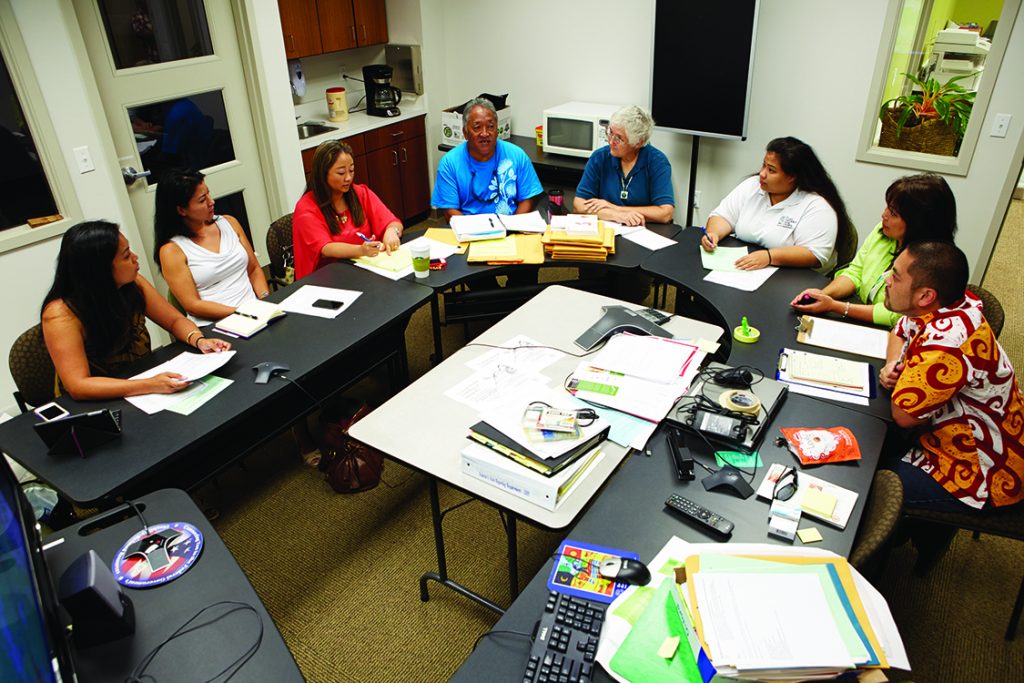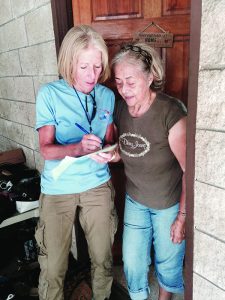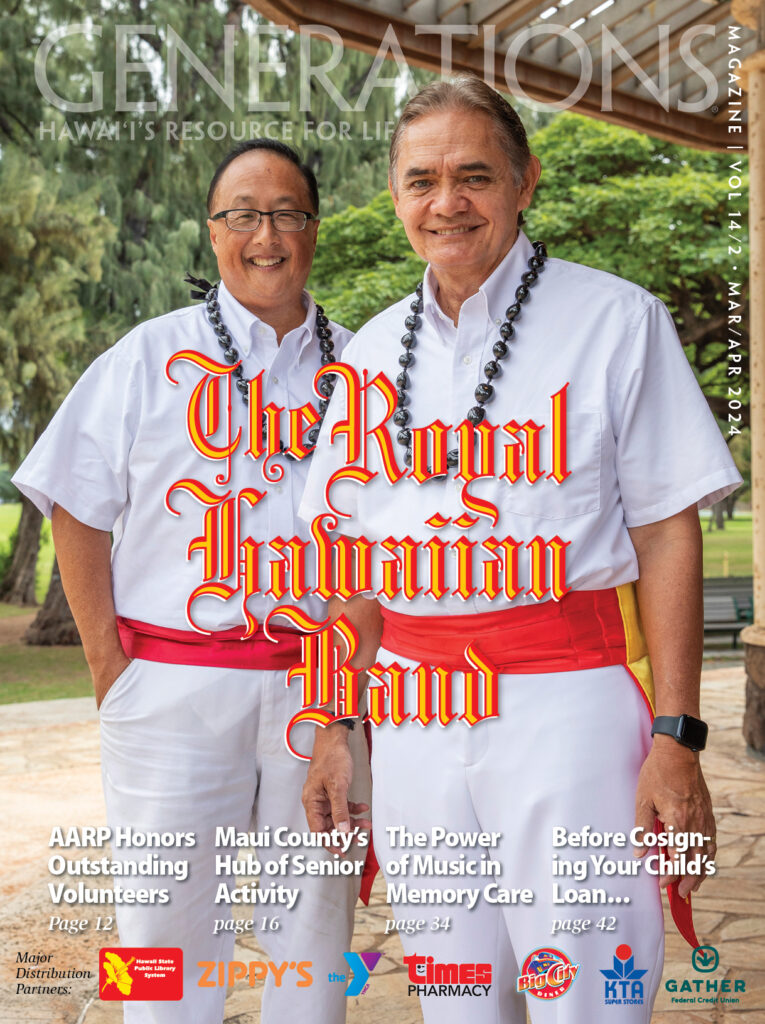Back in 2014, when a lava flow threatened Pāhoa, Generations Magazine learned just how “hands on” emergency response needs to be. Katherine Kama‘ema‘e Smith, former associate editor, joined a team of community volunteers on an evacuation outreach mission to seniors living in the path of the lava flow. Using an address list generated from the Hawai‘i County Office on Aging (HCOA) database, the volunteers went by van to canvass seniors to learn their needs and check on their preparedness for evacuation, should that be required.
The Big Island again finds itself dealing with a large number of people displaced by a lava event. “The fast-moving lava flow from Kīlauea volcano on May 3, 2018, forced 1,500 residents out of their homes and in search of shelter,” says Kimo Alameda, County Executive on Aging.

2014: The team from various departments of HCOA and ADRC gather in a specifically designed conference room nicknamed the “War Room”.
“The following day, two major earthquakes rocked Hawai‘i Island and the County of Hawai‘i needed an agency to take the lead in providing information, assistance, and referral. This is where government officials turned to the County’s Aging and Disability Resource Center (ADRC) in partnership with the County’s Housing Department. Together with a network of over thirty community providers, the Recovery, Information, and Assistance Center (RIAC) was set up to provide what the ADRC does best — provide accurate and timely information, assistance, referral, and options counseling.”
So, what is it about the ADRC that placed it on the front line right from the beginning of this ongoing disaster?
The Hawai‘i County Office of Aging was established in 1966 and today it works through the County, State Executive Office on Aging (EOA), and the Federal Administration on Aging to get its major funding to support its mission of providing a comprehensive and coordinated system of services that enable older people to live independently and with dignity. The ADRC’s role is to put that mission into practice. It is this long history of interaction with all three levels of government, as well as with community groups, that placed the county’s ADRC in an ideal position to coordinate a timely, effective response to the lava emergency.
The county’s battle plan
1) Anticipate. When the lava flow started on May 3, it was clear that people would lose their homes. Already tackling homelessness, the Community Alliance Homeless Partnership had a network of problem solvers already in place, and they quickly became the county’s Disaster Assistance and Recovery Team (DART).
2) Identify needs. An intake form was agreed upon to capture survivors’ specific needs so that the DART could help them resolve those problems.
3) Establish case management. Perhaps the most important step taken was to identify a case management agency to oversee the individuals and families displaced by the event. The Neighborhood Place of Puna was chosen for this role, and the DART partnered with Hawai‘i Community Foundation to pay for staffing for case management and a housing placement specialist.
4) Share information. A shared database is critical for tracking survivors and accountability. Every agency with resources to contribute to the intake follow-ups was given administrative access, allowing the DART to see how that process was going and ensure that services or resources like rental assistance weren’t duplicated.
Kimo Alameda reports that, as at the end of June, “we have over 1,000 households in our database. Specifically, 477 households are seeking permanent housing, 139 airfare, 72 medical health, 66 food/water, 64 counseling, 46 legal counsel and 174 financial assistance. We also identified 231 elders, 164 disabled or medically fragile, 77 veterans, and 235 children. And, it’s important to note that these are conservative numbers because not all survivors have come to the DART for assistance. About 25 percent of the total households affected are seeking their own support from family and friends.”
AGING AND DISABILITY RESOURCE CENTER
808-643-2372 | TTY line 808-643-0889
www.hawaiiadrc.org
For more information on each island’s ADRC, go to
https://generations808.com/august-september-2015/




